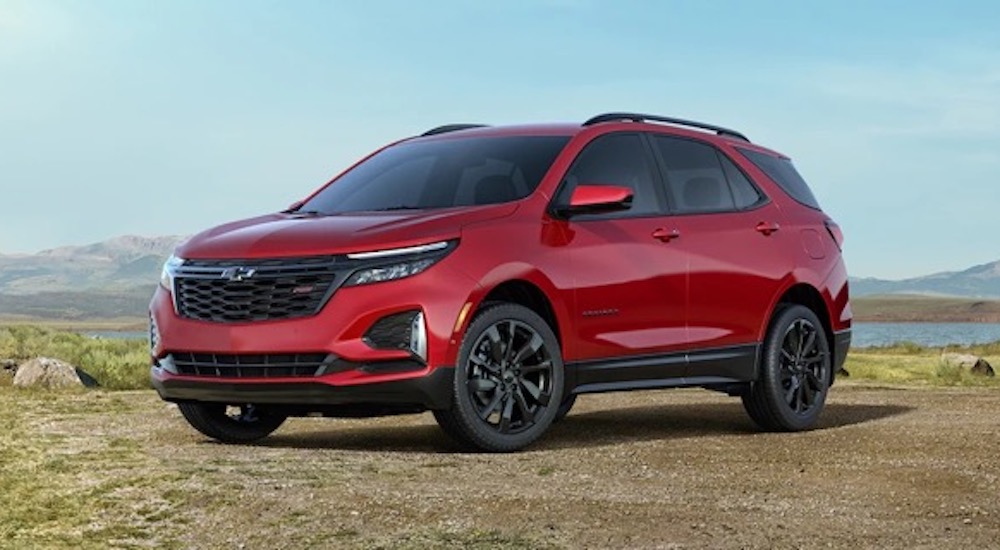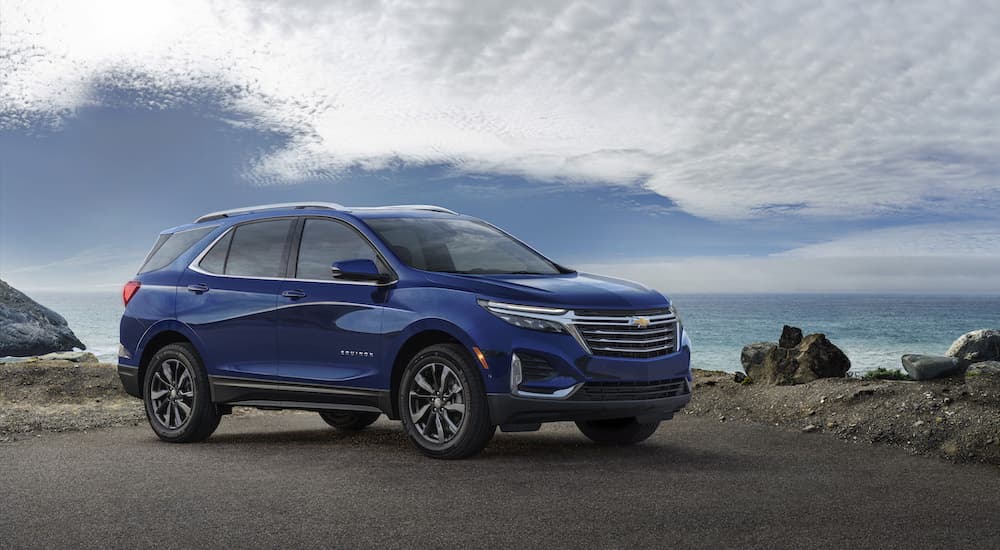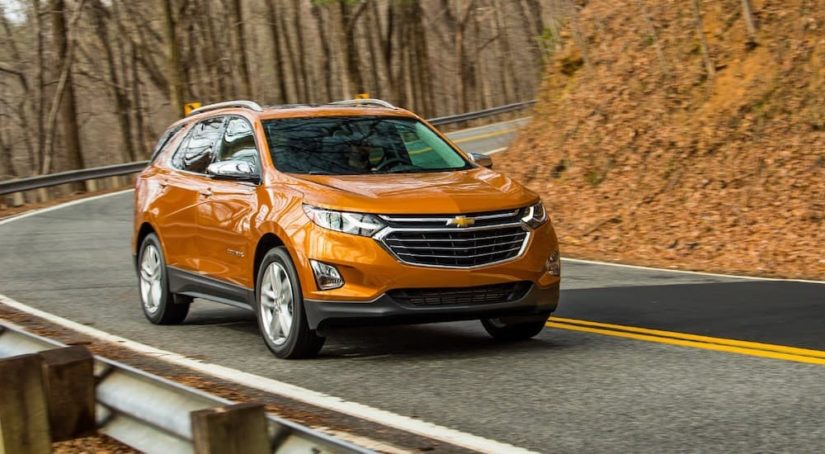Compact SUVs were first introduced in the 1990s, but have really come into their own over the past 20 years. Today, they are second only to pickup trucks when it comes to popularity. Chevy entered the race to build the perfect crossover in 2005 when it introduced the Equinox. This model is now in its third generation, with each subsequent model delivering more for drivers looking for a well-balanced compact SUV.
Balance is truly the key to a great crossover. The key for automakers is to find one that provides the right amount of roominess in the passenger cabin without cutting into cargo space. In addition, automakers need to balance performance and acceleration without hurting fuel economy. Finally, this balance needs to take affordability into account. To quote the Moody Blues, Chevy has been answering this Question of Balance in the affirmative for almost 20 years of the Equinox. However, while the 2023 Equinox has positioned itself as one of the most versatile new models in its class, buying a used Equinox in Saratoga, NY represents another great way to get a compact SUV that provides the balance of values you desire in your crossover.
How Did We Get Here?
In 2004, Chevrolet saw a quiet revolution going on in the auto industry. An increasing number of motorists were moving away from sedans and coupes, the model styles that had dominated motor vehicle sales for almost 100 years. Instead, they were beginning to see the advantages in models like the Suburban and the Blazer, sport utility vehicles (SUVs) that offered more room for passengers and cargo, with a rugged design and higher ground clearance making them better options for drivers living in less temperate zones. In addition, many SUVs offered all-wheel and four-wheel drivetrains, improving traction in inclement weather.
The designers at Chevy realized that there were drivers who wanted the advantages of an SUV, but with the benefits of a sedan, such as better comfort and maneuverability than a truck-based SUV. Other automakers had come out with compact and subcompact SUVs, often built on sedan platforms to provide these advantages. Chevrolet used a unibody design built on the GM Theta platform to create the Equinox alongside the Pontiac Torrent. To say this was a success is an understatement.

Success Right From the Start
The first-generation Chevy Equinox proved to be an incredible hit. Chevy sold over 84,000 vehicles in 2004 when it debuted as a 2005 model, and an astounding 130,000 vehicles a year later. Drivers seemed taken with the Equinox’s styling, safety, handling, and affordability. Chevy also established standard front-wheel drive while offering optional all-wheel drive. This allows drivers to decide between improved fuel economy with front-wheel drive, or better traction with all-wheel drive system.
Initially, Chevy provided one engine for all trim levels of the Equinox. This was a 3.4-liter V6 gas engine with a six-speed automatic transmission, good for 185 horsepower and 210 lb-ft of torque. This gave the first generation Equinox a great deal of versatility, including the ability to tow up to 3,500 pounds. The fuel economy for the first Equinox models was solid but not spectacular, with an average of 23 miles per gallon in highway driving. Chevy would begin offering a second engine option on the Equinox in 2008, a 3.6-liter V6 with 264 horsepower and 250 lb-ft of torque.
One of the ways that Chevy nailed the balance issue was in the arrangement of interior space. The first generation Equinox provided room for up to five passengers comfortably, and up to 68.6 cubic feet of cargo space.
Second Generation Equinox Is Twice as Nice
How do you improve upon success? This was the question confronting Chevrolet with the second generation Equinox. Pontiac was no longer in the game, so Chevy found itself all alone.
Sometimes adversity can be the mother of invention, as was the case with the second generation Equinox. This model featured two new engine options, as well as more interior space. The Equinox still had room for up to five passengers, but now each passenger had more room to stretch out. This came at the expense of cargo space, but only slightly, as the 2010 Equinox still had room for up to 63.7 cubic feet of your favorite things. The success of the second generation of the Equinox can be seen in its sales figures, averaging over 200,000 vehicles sold during its eight-year run.
The two engine options provided improved performance and fuel economy. Lower trims came with a 2.4-liter I-4 that provided 182 horsepower and 172 lb-ft of torque. The higher trims were offered with a 3.0-liter V6 with 264 horsepower and 222 lb-ft of torque. Both engines came paired with a six-speed automatic transmission. The I-4 delivered better fuel economy than before, up to 32 miles per gallon on the highway with front-wheel drive. Meanwhile, the V6 provided a respectable 24 miles per gallon in highway driving with the available all-wheel drive. The V6 would eventually be upgraded in 2013 to a 3.6-liter V6 delivering 301 horsepower and 272 lb-ft of torque. This improved acceleration while having no appreciable effect on fuel economy.
Chevy also introduced an upgraded infotainment system allowing drivers to connect their smartphones using Bluetooth technology, providing the ability to make hands-free calls. It also had features like SiriusXM satellite radio, so you could listen to your favorite programming no matter where you went in America.
Third Time’s a Charm
Chevy decided to pull out all the stops for the third generation of the Equinox, which came out in 2018. It offered drivers three different engine options, a state-of-the-art infotainment system, and optional active safety features. As a result, the Equinox would become one of the best selling crossovers on the market.
The three engine options on the 2018 Equinox all utilize turbochargers to boost performance. The base engine was a 1.5-liter turbo I-4 that comes paired with a six-speed automatic transmission. This delivers up to 170 horsepower and 203 lb-ft of torque. Front-wheel drive versions can get up to 32 miles per gallon on the highway.
There was also an optional 2.0-liter turbo I-4 with a nine-speed automatic transmission. This provides 252 horsepower and 260 lb-ft of torque. It gives you impressive acceleration without harming fuel economy, as all-wheel drive models can get up to 28 miles per gallon in highway driving.
Chevy also offered a 1.6-liter turbodiesel I-4 engine with a six-speed automatic transmission, producing up to 137 horsepower and 240 lb-ft of torque. The key attraction of the turbodiesel is its fuel economy, as you can get up to 38 miles per gallon in highway driving on all-wheel drive models. Chevy would offer the 1.6-liter turbo-diesel for just two years, phasing it out after the 2019 model year. The powerful 2.0-liter Turbo I-4 would follow a year later, leaving the 1.5-liter Turbo I-4 as the only engine option on Equinox models after the 2020 model year.
When it comes to safety, Chevy made the various active driver assistance technologies of its Chevy Safety Assist program available on the Equinox. These would all become standard equipment starting with the 2020 model, so if you buy a used Equinox from any year after 2019, you know you will get the Chevy Safety Assist features included.

The Future Is Equinox
Chevy hasn’t stopped moving forward with the Equinox. It has already announced an all-electric version of this popular crossover for the 2024 model year. As Chevrolet vice president Scott Bell points out, “The Equinox EV is an EV for everyone. It’s an affordable game-changer, offering an uncompromising experience, with more features, that won’t change your daily routine, except that you will no longer have to stop at the gas station.”
It is easy to understand why Chevy chose the Equinox as its next EV. The Equinox has demonstrated over three generations that it provides the perfect balance for a motorist, providing exceptional fuel economy with solid handling, while giving enough room for passengers and cargo.



